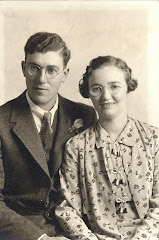The Golden Gate Exhibition of 1939 - According to the Bancroft Museum at Berkley...
"Held from February 18, 1939 to October 29, 1939, the Golden Gate International Exposition had a hard act to follow. The Panama-Pacific International Exposition was said by many to be the quintessential exposition. The final realization of Golden Gate International Exposition would be hampered by the state and the country coming out of the most severe economic depression in their history.
But given these limits, this fair too created a distinctive environment, reflecting the dreams and aspirations of its time. Its theme, the "Pageant of the Pacific" allowed the exposition to look out beyond the continental United States to the Pacific Rim, not only accommodating these diverse cultures, but also making them the focus of the exhibition. This theme was developed in much of the programming, architectural design and realization of the fair. Architectural contributors included Arthur Brown, Jr., George Kelham, Lewis Hobart, William Merchant, Bernard Maybeck and Timothy L. Pflueger.
The Evening Star from the Court of Flowers
While the Panama-Pacific International Exposition reflected Beaux Arts esthetics and was a homage to European traditions, Golden Gate International Exposition demonstrated an eclectic blending of European, Eastern and Latin American architectural, landscape, and artistic styles. Evoking the exoticism of Pacific Rim cultures such as the Mayas, Incas, Malaysians, and Cambodians, many of the architectural structures reflected a nostalgic look at past civilizations. However, there were examples of a stream-lined, international style architecture, seemingly out of place with these other styles, but meant to reflect western nations along the Pacific Rim. Reinforcing this theme of modernism and technological innovation was the celebration of the earlier completion of the Golden Gate and San Francisco/Oakland Bay Bridges. The Golden Gate International Exposition also took advantage of the high-tech developments, especially noted in the lighting of the fair. Jesse Stanton played the role of Jules Guerin as master colorist; and dramatic, indirect lighting, under the control of A.F. Dickerson, was used once again. Women played a prominent role in this exhibition, not only in helping with organization, but being focused upon as contributors to art exhibitions and to the special events at the fair.
The Court of Reflection and Arch of Triumph
Although it did not garner the popular and financial success of the Panama-Pacific International Exposition, the fair at Treasure Island, as with all international expositions, attempted to bring together the diverse populations of the world in peace. Situated on either side by two major difficult times, the Depression and World War II, the Golden Gate International Exposition was the last fair of this scale hosted by California.
The Elephant Train
"Mar. 23 '39
Dear Folks,
I didn't write yesterday. Forgot in the morning, intended to write from T. Island but forgot. We saw Ore. win both games. Got home 1:30 A.M. first two nites 10:30 P.M. last nite. Wake up about 7:30. Clean up and ready to out to breakfast 9:30. Fair open 10:00. Will go to Los G. Sat. I think.
T. Island is 1 mile long 2/3 mile wide. We go back and forth until we are tired, stand till we have to sink down somewhere. Rest half an hr. and go again.
Elephant Train Ticket
Wish you could see all the beautiful sights. The modern lighting of the exterior of the buildings is wonderful. Lots of the exhibits are arranged in windows that light up when you walk under electric eyes.
The kids are getting enough or short on money so we will be coming home in a few days. Feeling fine, weather cloudy but warm except on Island windy.
Jim & Marg't"
Map of Treasure Island and Exposition

























No comments:
Post a Comment
Thanks so much for taking the time comment!